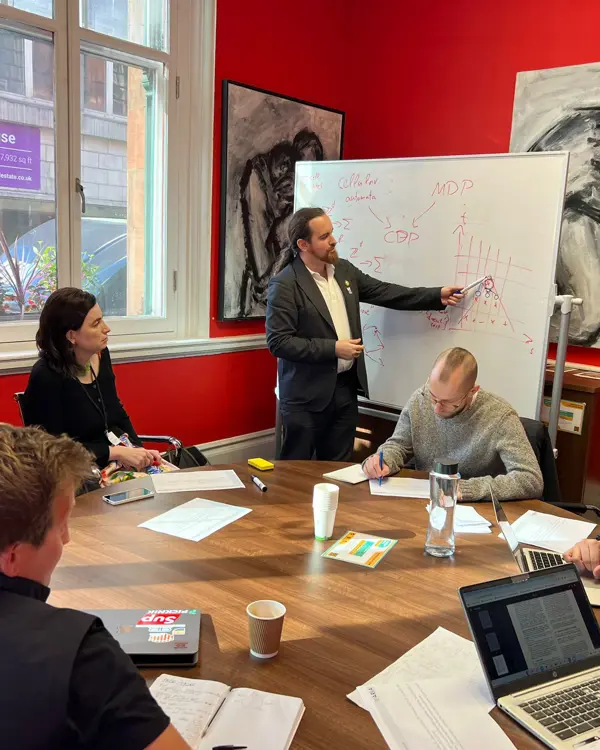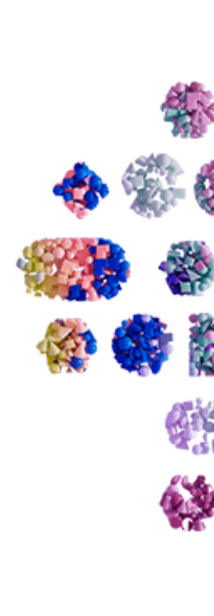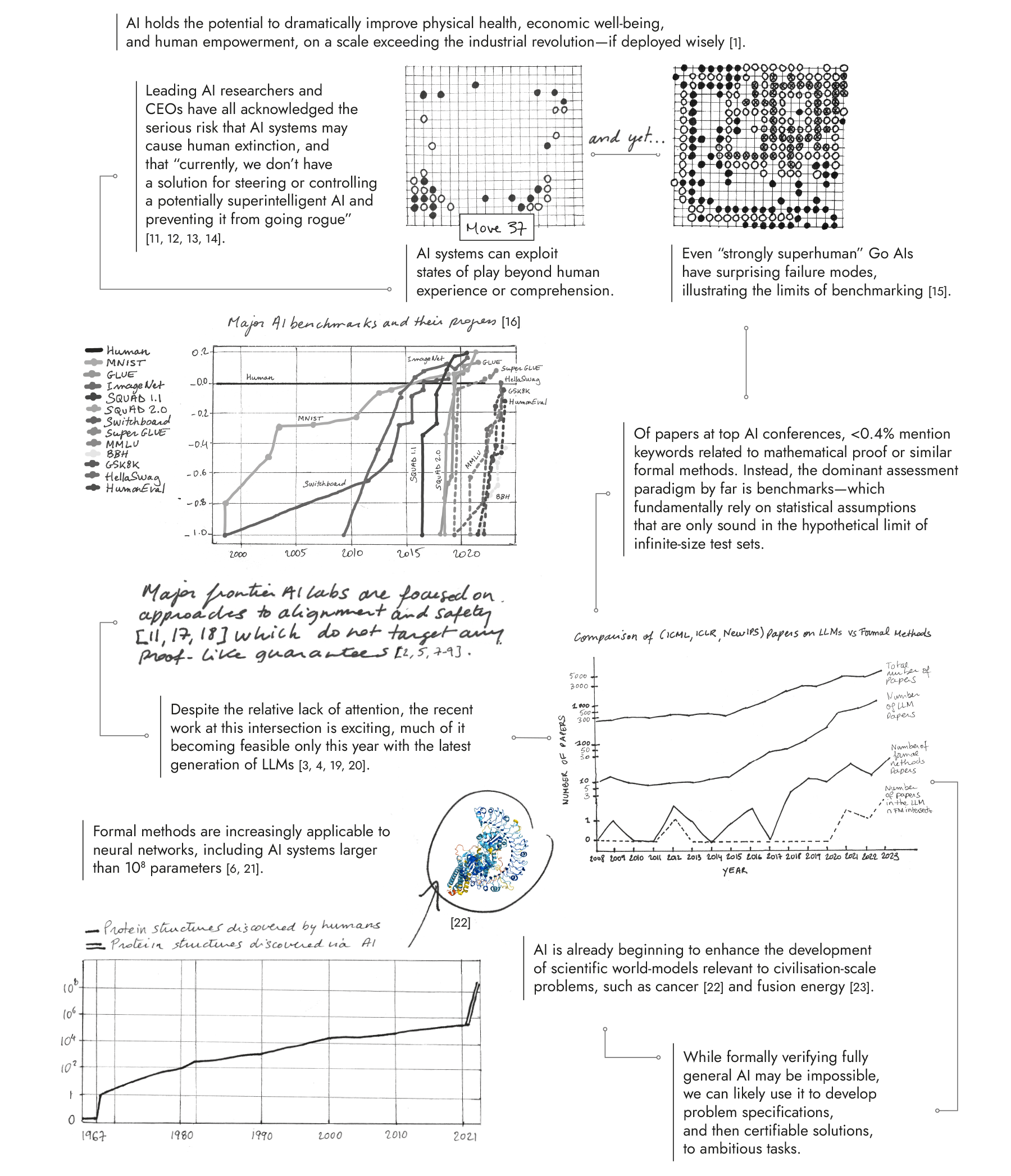What if we could use advanced AI to drastically improve our ability to model and control everything from the electricity grid to our immune systems?
Defined by our Programme Directors (PDs), opportunity spaces are areas we believe are likely to yield breakthroughs.
In Mathematics for Safe AI, we are exploring how to leverage mathematics and scientific modelling to advance transformative AI and provide a basis for provable safety.
Core beliefs
The core beliefs that underpin this opportunity space:
Future AI systems will be powerful enough to transformatively enhance or threaten human civilisation at a global scale —> we need as-yet-unproven technologies to certify that cyber-physical AI systems will deliver intended benefits while avoiding harms.
Given the potential of AI systems to anticipate and exploit world-states beyond human experience or comprehension, traditional methods of empirical testing will be insufficiently reliable for certification —> mathematical proof offers a critical but underexplored foundation for robust verification of AI.
It will eventually be possible to build mathematically robust, human-auditable models that comprehensively capture the physical phenomena and social affordances that underpin human flourishing —> we should begin developing such world models today to advance transformative AI and provide a basis for provable safety

Programme: Safeguarded AI
To build a programme within an opportunity space, our Programme Directors direct the review, selection, and funding of a portfolio of projects.
Backed by £59m, this programme looks to combine scientific world models and mathematical proofs ARIA is looking to construct a ‘gatekeeper’ – an AI system designed to understand and reduce the risks of other AI agents. If successful, we’ll unlock the full economic and social benefits of advanced AI systems while minimising risks.
Opportunity seeds
Outside the scope of programmes and with budgets of up to £500k, these opportunity seeds support ambitious research aligned to the Mathematics for Safe AI opportunity space.
We’re funding 15 opportunity seeds exploring different mathematical approaches to help us verify, understand, and control AI systems.
Formalising and Mitigating the ‘Eliciting Latent Knowledge’ Problem
Francis Rhys Ward, Dr Francis Rhys Ward's Research Group
End-to-End Verification for Constraint Programming
Ciaran McCreesh
SFBench
Jason Gross, Theorem + Redwood Research
Hardware-Level AI Safety Verification
Edoardo Manino, University of Manchester; Mirco Giacobbe, University of Birmingham
Dovetail Research
Alfred Harwood, Dovetail Research
FV-Spec: A Large-Scale Benchmark For Formal Verification of Software
Mike Dodds + Ledah Casburn, Galois
Human Inductive Bias Project
Chris Pang, Meridian
Investigate the feasibility of using LLMs to scalably produce Large Logic-based Expert Systems (LLES)
Joar Skalse
Singular Learning Theory for Safe AI Agents
Daniel Murfet, Timaeus
Learning-theoretic AI Alignment Research Agenda
Vanessa Kosoy, CORAL
Combining Physical and Intentional Stance for Safe AI
Martin Biehl, Cross Labs, Cross Compass; Manuel Baltieri, Araya Inc.; Nathaniel Virgo, University of Hertfordshire
SafePlanBench & Logically Constrained Reinforcement Learning
Agustín Martinez Suñé, University of Oxford
GFlowNet-Steered Probabilistic Program Synthesis for Safer AI
Sam Staton, Nikolay Malkin + Younesse Kaddar, University of Oxford
SCRY-AI: Self-operating Calculations of Risk for Yielding Accurate Insights
Vehbi Deger Turan, Metaculus
Extraction of Structured Knowledge from Language for Scientific Discovery
Nikolay Malkin + Henry Gouk, University of Edinburgh
This opportunity space is part of our rolling seed call experiment – see what's in scope for opportunity seeds in this space by reading the original call for proposals and apply at the link below.
Sign up for updates
Stay up-to-date on our opportunity spaces and programmes, be the first to know about our funding calls and get the latest news from ARIA.


